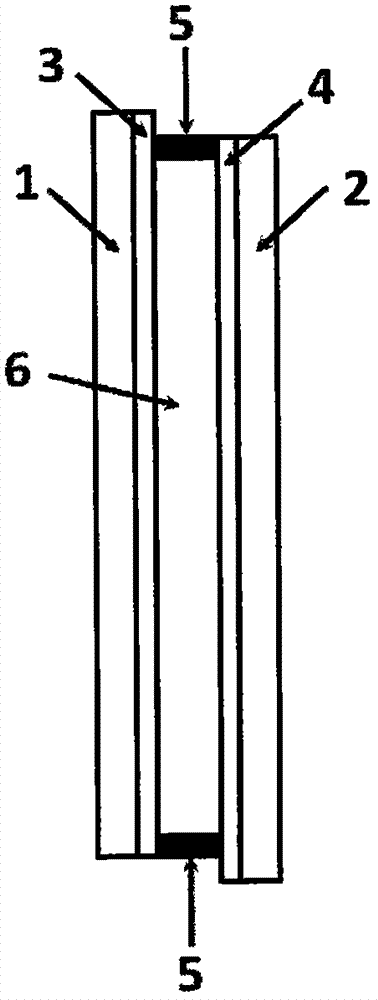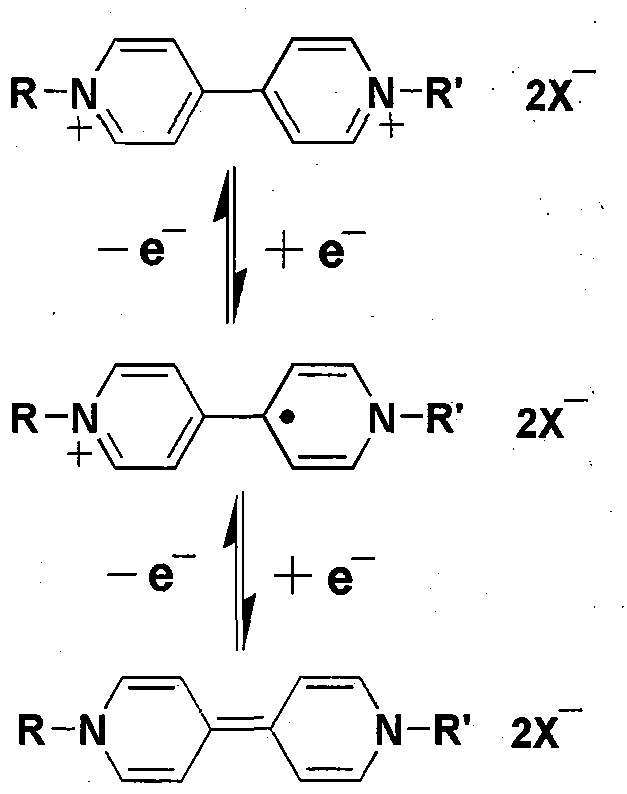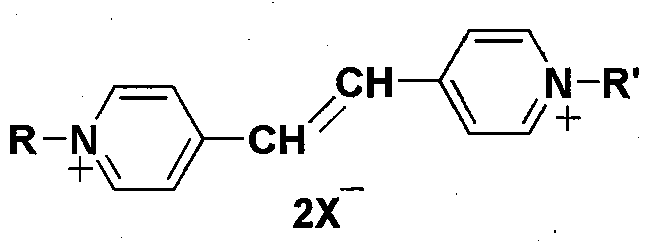Cathode electrochromic compound for electrochromic device
An electrochromic device and anode electrochromic technology, applied in the field of compounds, can solve the problems of difficult to obtain a dark environment, high light transmittance, difficult to obtain, etc., to improve electrochemical reversibility, expand application fields, improve The effect of color change speed
- Summary
- Abstract
- Description
- Claims
- Application Information
AI Technical Summary
Problems solved by technology
Method used
Image
Examples
Embodiment 1
[0029] (1) synthesize the cathodic electrochromic compound of following structural formula:
[0030]
[0031] The synthetic route is as follows:
[0032]
[0033] The first step: under a nitrogen atmosphere and an ice-salt bath, a solution of 1,2-dimethoxyethane (50 mL) containing trimethyltin chloride (0.3 mol) was added dropwise to a solution containing metallic sodium (0.9 mol). 1,2-Dimethoxyethane (200mL) and reacted for 2h. Thereafter, unreacted metallic sodium was removed by filtration. Under ice-salt bath conditions, a solution of 2-chloropyridine (0.25 mol) in 1,2-dimethoxyethane (250 mL) was added dropwise to the obtained filtrate and reacted for 3 h. After the reaction, the solvent was distilled off under reduced pressure, the residue was extracted with diethyl ether, and then the diethyl ether was distilled off to obtain trimethyl(2-pyridyl)tin.
[0034] The second step: trimethyl (2-pyridyl) tin (10mmol), 1,4-diiodobenzene (5mmol), three (dibenzylideneacet...
Embodiment 2
[0050] (1) synthesize the cathodic electrochromic compound of following structural formula:
[0051]
[0052] The synthetic route is as follows:
[0053]
[0054] Synthetic steps and conditions refer to Example 1, wherein, adopt 3-chloropyridine to replace 2-chloropyridine, adopt 1,3-diiodobenzene to replace 1,4-diiodobenzene, adopt bromoheptane to replace bromoethane and adopt four Sodium fluoroboride was substituted for sodium 4-methylphenylsulfonate.
[0055] (2) Preparation of electrochromic device:
[0056] Dissolve the target product 14 and 2-tert-butyl-5,10-dihydro-5,10-dimethylphenazine in tetraethylene glycol dimethyl ether at a concentration of 50mmol / L to form an electrochromic Medium, perfused in such as figure 1 In the shown electrochromic device, then seal it with glue to obtain a device with electrochromic function.
[0057] (3) The transmittance of the electrochromic device to visible light and the results of its cycle times are shown in Table 1 below...
Embodiment 3
[0068] (1) synthesize the cathodic electrochromic compound of following structural formula:
[0069]
[0070] The synthetic route is as follows:
[0071]
[0072] The synthetic steps and conditions refer to Example 1, wherein, 4-chloropyridine is used to replace 2-chloropyridine, 1,2-diiodobenzene is used to replace 1,4-diiodobenzene and sodium trifluoromethanesulfonate is used to replace 4-methyl Sodium phenyl sulfonate.
[0073] (2) Preparation of electrochromic device:
[0074] The target product 21 and triphenylamine are all dissolved in propylene carbonate according to the concentration of 50mmol / L, and are made into electrochromic medium, poured in such as figure 1 In the shown electrochromic device, then seal it with glue to obtain a device with electrochromic function.
[0075] (3) The transmittance of the electrochromic device to visible light and the results of its cycle times are shown in Table 1 below.
PUM
 Login to View More
Login to View More Abstract
Description
Claims
Application Information
 Login to View More
Login to View More - R&D
- Intellectual Property
- Life Sciences
- Materials
- Tech Scout
- Unparalleled Data Quality
- Higher Quality Content
- 60% Fewer Hallucinations
Browse by: Latest US Patents, China's latest patents, Technical Efficacy Thesaurus, Application Domain, Technology Topic, Popular Technical Reports.
© 2025 PatSnap. All rights reserved.Legal|Privacy policy|Modern Slavery Act Transparency Statement|Sitemap|About US| Contact US: help@patsnap.com



